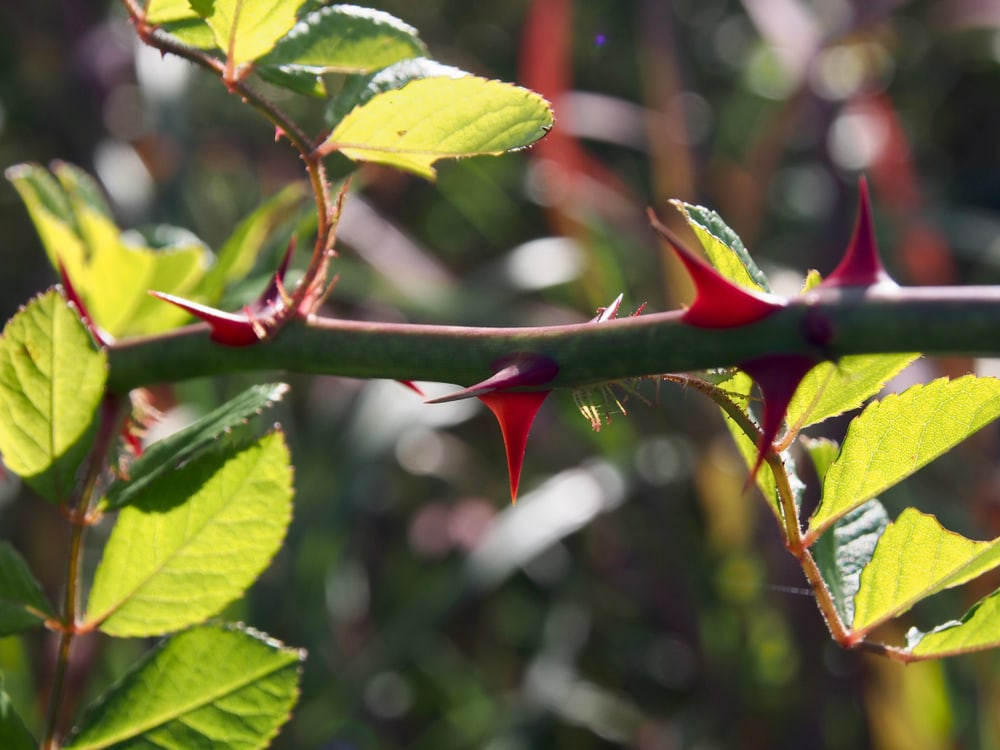When it comes to protecting your home, you want to take whatever means are necessary. However, you also don’t want to spend a lot of money or have something that looks garish in your yard, like a bunch of cameras and fencing. You can avoid all of that and help ward off unwanted trespassers by simply looking at the best defensive outdoor plants. Many plants have natural defense mechanisms to protect them from pretenders. Likewise, you can plant certain trees, bushes, and flowers to defend your home from intruders. Growing these plants in your yard and under your windows is a fast, easy, and affordable way to protect your property. So, what plants should you be looking at to help defend your home? Keep reading for the best outdoor plants for deterring burglars or unwanted animals from your home.
26. The Voodoo Rose Is Extremely Pretty but Also Very Thorny

Roses are thorny, but the voodoo rose is different in the thorn department. Many gardeners have likened the voodoo rose’s thorns to barbed wire, which is not something to be messed with. This feature makes it a great outdoor plant to grow around your windows so that there’s no incentive to climb in. We say around because a voodoo rose bush can grow at least six feet tall, becoming a great deterrent. The fantastic view of its beautiful flowers through your windows also adds a tremendous visual benefit (via Serenity Health).


























